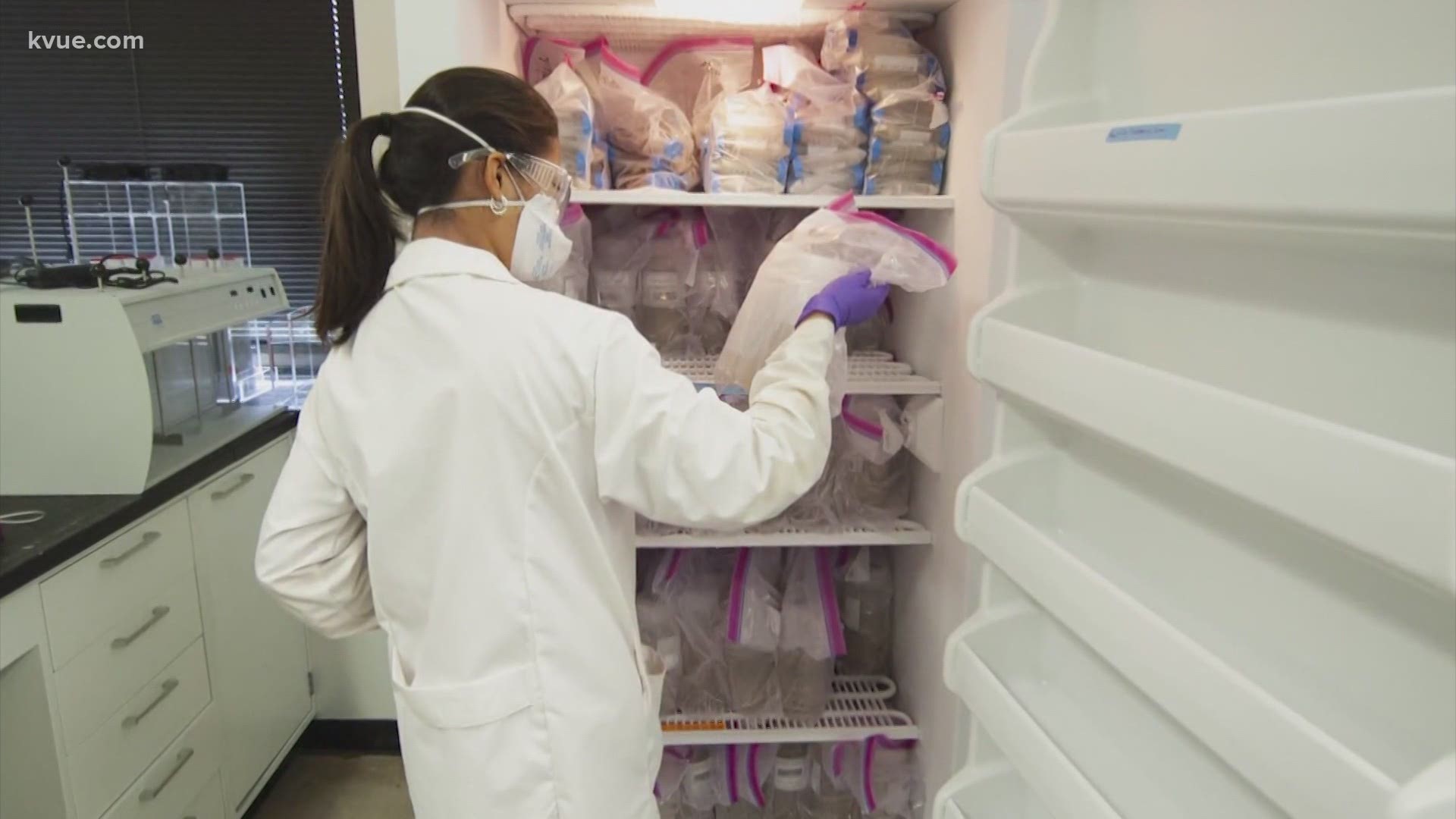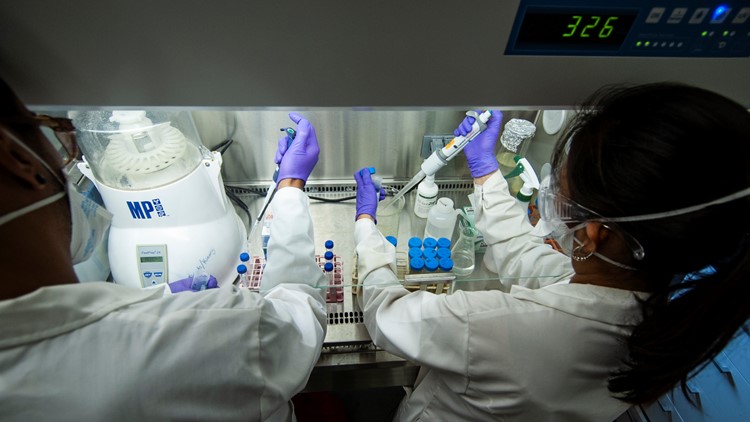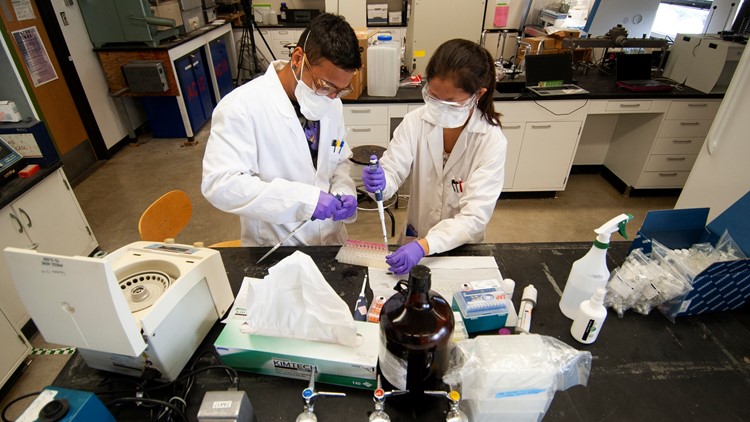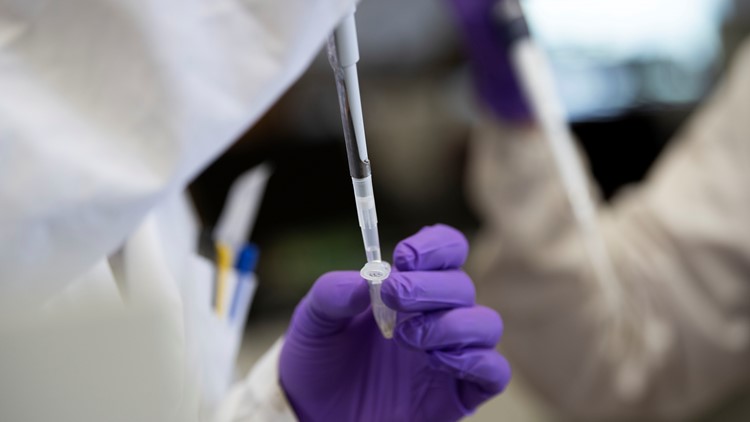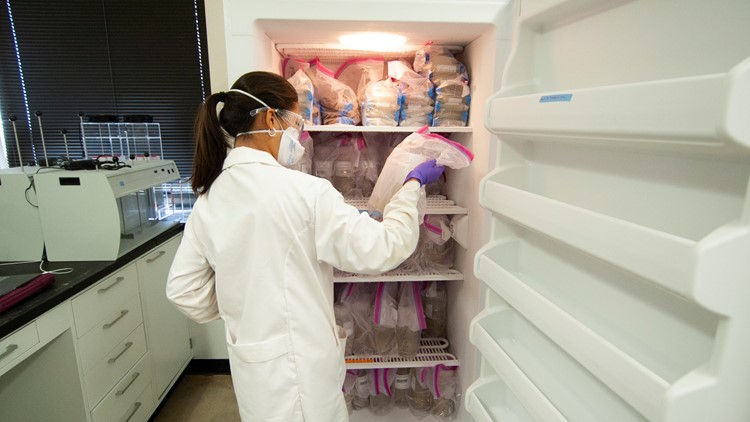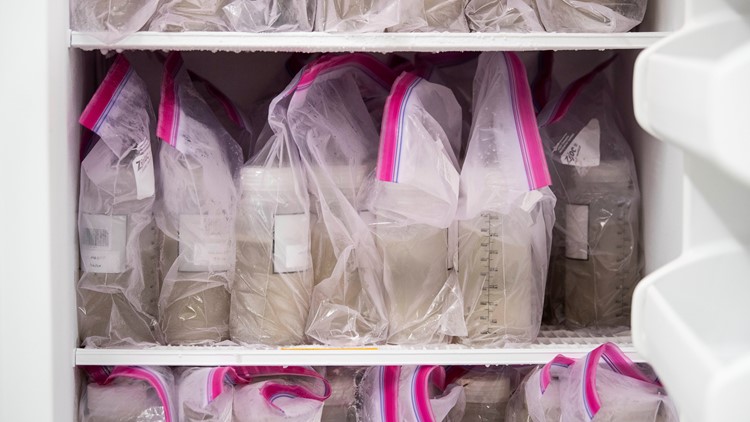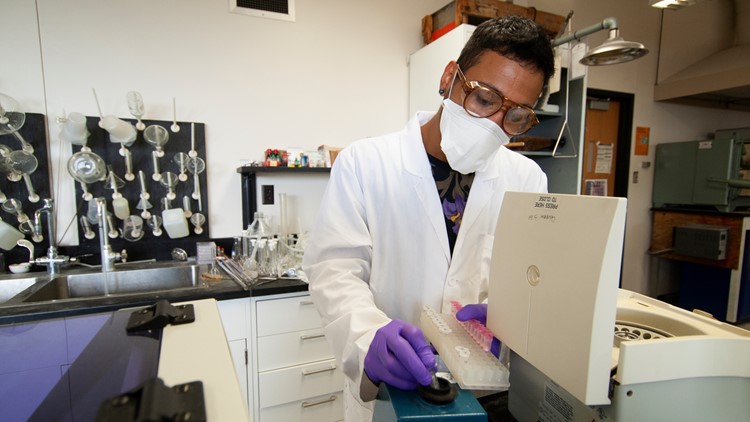AUSTIN, Texas — Researchers at the University of Texas at Austin are monitoring the city's wastewater because, according to them, it is a leading indicator for COVID-19 spikes in the community.
Suzanne Pierce, Ph.D., Kerry Kinney, Ph.D., and Mary Jo Kirisits, Ph.D., are all part of UT's Canary Team.
"As soon as we found out that this was a fecally-shed virus, all the environmental engineers were like, 'Hey, we need to monitor this in wastewater,'" said Kirisits.
COVID-19 can be detected with a nasal swab, in saliva and in fecal material.
"Anyone who is living in the City of Austin, when they flush the toilet, they're contributing to our samples," said Kirisits.
Collecting the data is the first step. Then, Pierce and her team step in.
"Without the work that is being done by the water resource and water quality engineers, we can't move to the next step, which is helping them to process that information," said Pierce. "And then [we] connect it up with the models and ways to simulate and analyze the maps of the city to understand more clearly how the virus is moving and how we can identify the hotspots."
PHOTOS: University of Texas at Austin researchers testing wastewater to predict COVID-19 spikes
Kirisits said other studies in the U.S. and globally have shown this type of data collection can be a leading indicator for when a community is going to see a spike in COVID-19 cases. Similar research has been done to monitor other outbreaks, like polio.
"That being said, it's not a replacement for individual testing of people, but it's a way that you can capture a large population. And then from that data, you could say, 'Oh, wow, we really need to focus in on this area and get people in this area tested because our signal was high in the wastewater,'" said Kirisits.
The goal is to eventually go into specific areas of the city and potentially find upticks in COVID-19 weeks before the case numbers rise or hospitalizations spike.
"I think that'll be important as the case numbers come down. And we want to know, 'Is this coming back?'" Kinney said. "We could have an indication a week, two weeks, ahead of the case numbers rising. And if we actually go out into the sewer shed and look at different areas across Austin, for example, we can know where we could target the resources to get additional testing so we can catch it early."
In addition to getting samples from two major wastewater treatment plants in Austin, the team has started honing in on UT, which they call Canary on Campus.
The team gets samples from manholes around UT, which would give them the ability to trace findings back to a specific building. As of Thursday, the Canary Team was still in the process of analyzing and interpreting the data collected from the UT campus.
PEOPLE ARE ALSO READING:

